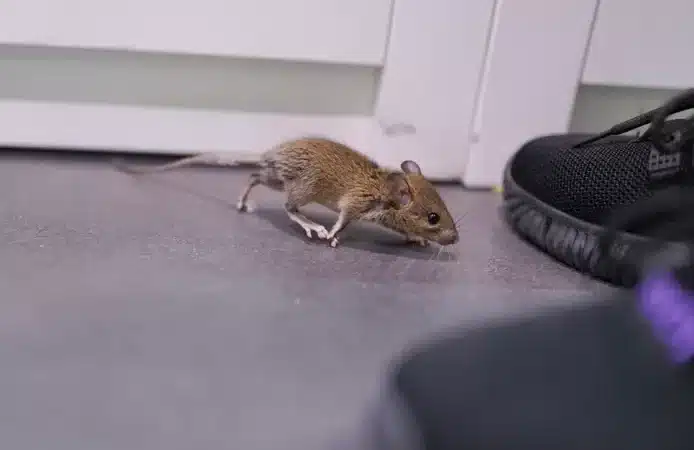
One in four households has had mice in the house at some point. Four per cent have even encountered rats inside, according to research commissioned by the Ministry of Infrastructure and Public Works. It doesn’t have to come to that at all. With these simple measures, you can prevent mice from picking your home to nest.
Mice and rats like warm and dry places to stay. And so our houses are popular with these rodents. A five-millimetre hole is enough for a mouse to invade. However cute: mice in the house, you don’t want that. ”A mouse reproduces at lightning speed and is never alone,” says biologist Max Strating. ”If you spot one, count on a whole family.”
Nothing is safe from their gnawing instincts. They nibble on food lying around, insulation material or on your furniture. If they chew on wires, they can cause short circuits and fires.
And they transmit diseases, via their droppings. ”So they pose health risks to us. They can also transmit diseases through ticks, fleas or mites they carry.”
According to information organisation Milieu Centraal, most Dutch people point to nearby nature as the source of the rodents. Then they blame neighbours and the city as the main cause. But this is not entirely justified. Food combined with shelter and nesting space are considered the biggest causes of an animal infestation of mice or rats. And you can do something about that yourself.
Rats also gravitate towards food sources. A brown rat digs burrows and can end up in the crawl space. Strating: ,,Brown rats live in sewers and even crawl up through your toilet bowl. The black rat is a tree-dweller, it prefers to be high and dry. With ease it climbs up the facade to sit under the roof tiles or in the attic.”
Preventing mice
Prevention is better than cure. Therefore, start by taking precautions.
1. First of all, it is important to clean your home properly. Clear away food scraps and crumbs.
2. Make sure mice do not have access to food sources, such as crumbs or open packages. Always keep your food in glass jars or plastic storage boxes, including bird food and cat food. A cat in the house can help, by the way; their scent has a deterrent effect. Don’t forget pet food in the cellar, shed or garage either.
3. Make sure waste bins close properly. Mice and rats also find food leftovers in the dustbin interesting.
4. Close vents, cracks and crevices, but still provide adequate ventilation. A mouse can even fit through a crack half a centimetre wide. Don’t forget the cracks in the crawl space and around your water connection.
5. Do not leave food leftovers lying around your house. Also close the animal enclosures properly. Do not feed birds more than necessary.
Catching mice
If you already suffer from mice, you can try to catch them. A cage or tilt trap is the most animal-friendly way. The animal remains alive after being caught after which you can put it outside. Do not use glue boards: these are banned and very unfriendly to animals.
Pinch and slap traps are also not particularly pleasant, but do kill the animals immediately. Never use poison yourself: it is dangerous for you, your child and your pet. Rather, engage a licensed pest controller for control. “In case of rat nuisance, investigate how they got in,” says the biologist. ”Perhaps there is a break in the sewer, or you can find an opening to the street in the basement or crawl space.”

